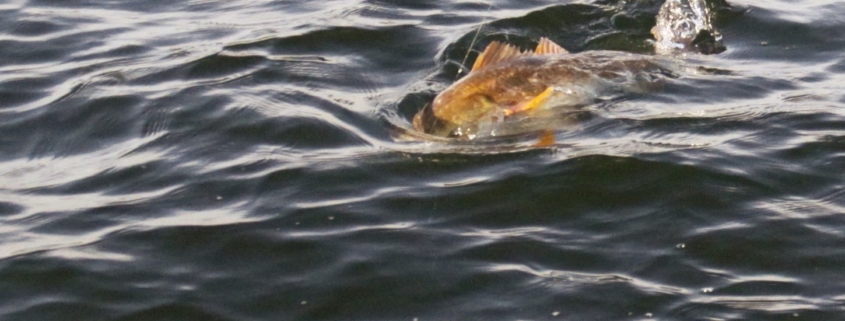 Jonas Magnusson
Jonas MagnussonThe leader is probably the most overlooked or misunderstood part of the fly casting system. It is impossible to do the subject any justice in one blog, therefore I will parse it out. This part covers various generalities on leaders.
Intro
Much is written on leaders in fly fishing. A Google search – “fly fishing leaders” – yields about 17,600,000 hits (0.91 seconds). That’s a lot to chew through, and if you missed the 11,111,00th you are in serious trouble. Some pieces are of course excellent, and others are less so. However, leaders are often made out to be very complicated, when they are not. Remember, the leader is a continuum of the fly line that happens to be clear. The front taper of the fly line tapers down to dissipate the energy of the cast, but should leave just enough energy to turn over the leader and the fly. That’s the leader’s function (dissipate energy – turn over fly) – there is no mystery. The standard leader is 9′ long, starts with a butt end, and ends after tapering, in the now thinner tippet end. That’s it – that all there is to it.
Casting
When ruminating on leaders, we must make clear, that they are caster dependent. The longer they get, the better you must cast, and the more delicate leaders require better casting. Casting is always a part of leader design. So, remember the leader you use must match your casting abilities. Those who recommend a certain leader, should also state for whom it is intended. If a leader is very long and delicate, it is for the idiot savants of fly casting, but they do not need any help for sure. Our recommendations are for beginners and average casters.
The leader you use trout fishing is also dependent on the general visibility of the day. A calm day with no cloud coverage and clear water, means good visibility for the fish, and calls for a little longer leader. On a dark rainy day the leader can be a bit shorter. The mass of the fly used is very important. Small dries can be cast with delicate leaders whereas a big weighted Wooly Bugger needs a much more powerful leader.

Housekeeping
Some housekeeping before we dive into it. A commercial leader comes in one piece. The thick first part is the level butt, then we have the mid-section or the taper, and finally the level tippet. The leader starts out level, then tapers down, and then levels out again. As you change your flies the tippet or terminal portion of your leader gets cut, and the leader shortens. Therefore, you carry a spool of mono of similar diameter to the tippet, and tie in pieces to lengthen the leader again. Mono just means single stranded, but the term has drifted (languages do that) to mean nylon in fly fish speak. Fluorocarbon (also mono) is also used as tippet material, often just shortened to fluoro.
Tippet – The rule of eleven
The tippet material is loaded onto spools, and marked with its breaking test – 5 pound or 10 pounds, etc.- and the diameter of tippet which is far more important. Then there is something called X, for instance X, 2X or 5X stamped on the spool label. This X system is used to indicate the diameter of monofilament lines. This X denotation comes from the past like so much in our sport. Leaders were made from silk worm guts. The segments were then drawn through dies that shaved off a little bit every passage. 3X had been 3 times through etc. The higher the X number the thinner the tippet.
Now the standard is set so that 0X is 0.011 inches thick. Subtract the number prefix to the X from 0.011 to find the diameter of the tippet – for 1X we go 0.011 – 1 = 0.010 etc. Take the 2 numbers, add together = 11. Another way to explain this is to say the X rating plus the diameter in thousandths will be equal to 11. (5 thousandths (.005”) + 6X = 11. 3X + 8 thousandths (.008”) = 11). Now, the various sizes can be found in the table below. Of course the diameter of the tippet is also stated making the x system redundant but the “trouters” love it and therefore it stays. The “salters” only pay attention to the breaking test of their tippet when they should be paying attention to the diameter too.
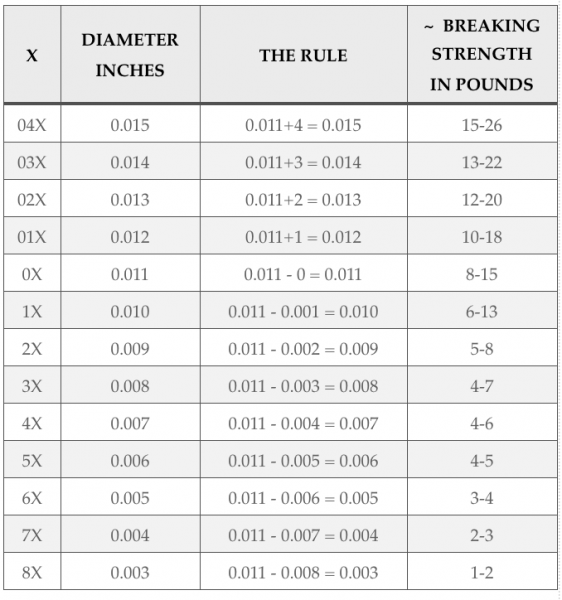
Mass or break strength
Tippet material has evolved and become very strong. Now for instance, you can get tippet material with 0.011” diameter that has an impressive 16 lb. break strength (diameter of “old tech” 16 lb. Mason Hard mono is 0.020″). Its density has not increased – it is still the same. The mass of such a piece of tippet is therefore smaller than the “older” tippet. However, the turnover of the leader is dependent on the MASS of the leader NOT the break strength og the tippet. Therefore, the diameter (better indicator of mass) of the tippet is the all important factor, not the break strength, when building leaders or adding tippet to a leader. We should emphasize that tensile strength of sections of leaders are unimportant EXCEPT for the tippet, the weak link. Pay no attention to the tensile strength of butt and taper, it will lead you astray, the mass/diameter rule is the important one!
Pay attention to your butt size
So, in the last blog (see below), I explained the importance of having a thick butt on your leader connecting to your fly line. Approximately 70% off the diameter of the tip of the fly line is the goal for the butt’s leader. We arrived at the 70% figure by dividing the relative density of the floating fly line tip or 0.85, with the relative density of 6/6 nylon or 1.2 – 0.85/1.2 = 0.70. This applies only to floating lines. The relative density of the tip of sinking lines is much higher. Therefore open up your loop to minimize the kick, when casting sinking lines. So, it follows that the meatier lines need leaders with thicker butts. You can easily measure the tip off the fly line with a micrometer. The butt diameters of ready-made commercial leaders is now generally of the right size.
Purpose of leader
What’s the purpose of the leader? To deliver the fly, and dissipate the energy of the cast. That’s best achieved by tapering the leader, insuring just enough energy to turn over the fly. Ready made leaders start level, then they taper down and level out again. If you are casting as hard as you can and can’t turn over the leader you need to shorten it and/or use a lighter fly.
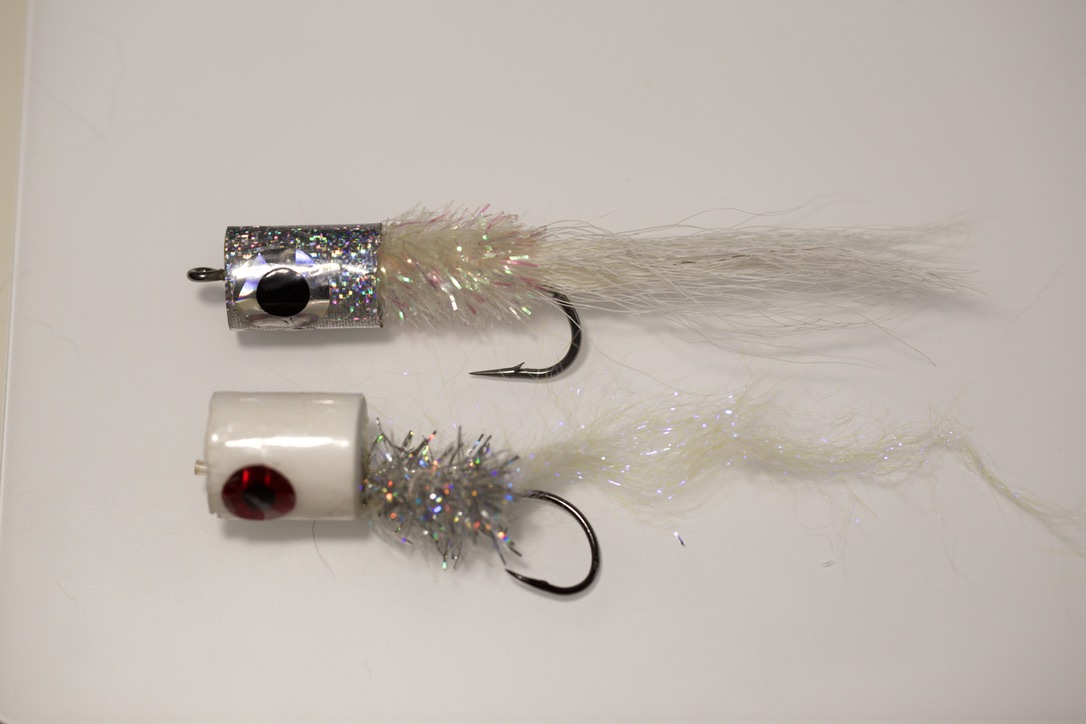
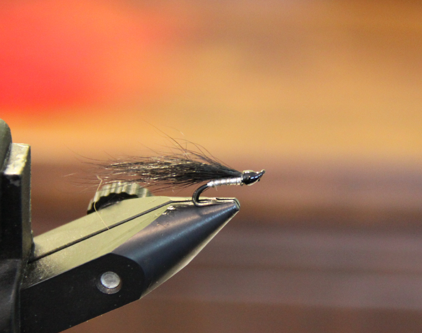
The leader ends where we tie in the fly. Not rocket science exactly. But it is obvious that we can’t tie a very thick tippet to a small Collie dog. Conversely, we don’t tie a 3 lb. tippet to a monstrous ten-inch fly. Therefore, it is clear that the tippet size must match the hook size to an extent. You can also divide fly size by 3 and that’s your X size. Adjust up or down 1 size depending on conditions. The recommendation for the tippet size and hook size is more fluid than the recommendation for the butt size, but you’ll get the idea. As you bumble along you get a feel for the size of tippet to use with the various hook sizes.
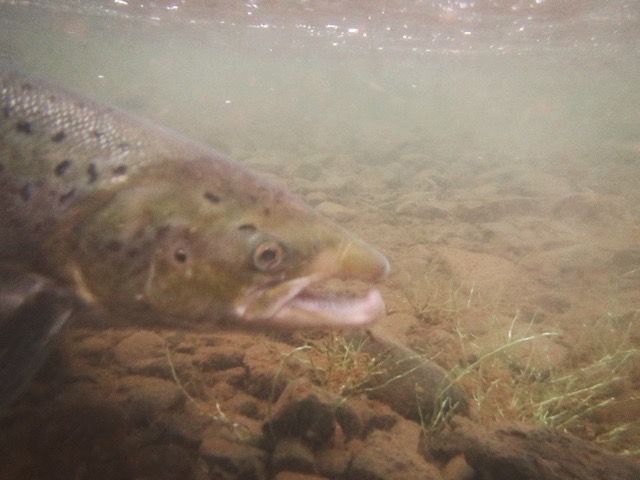
Light lines can’t cast heavy flies
Some fish (bonefish and salmon for instance) take flies that could easily be cast with light rods. However, you do not want to deal with a salmon equipped with a four-weight rod. Same goes for bonefish. The bonefish flats are wind swept, and you just need heavier lines because of that. If the fight gets prolonged, a shark will eat the exhausted bonefish for sure. It is super important to remember that you can cast small flies with heavy gear, but can’t cast big flies with light gear.
English consultant: My good retired neighbor Joe
Technical consultant: Bruce Richards

